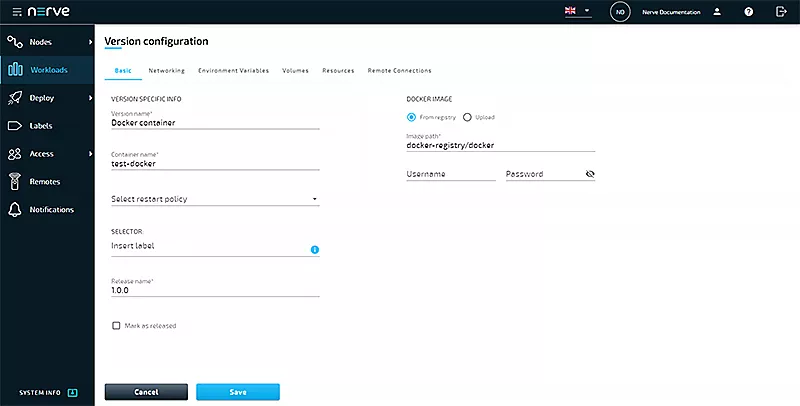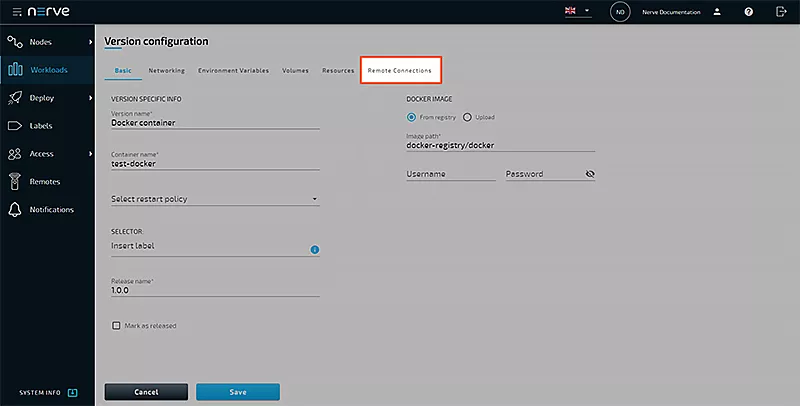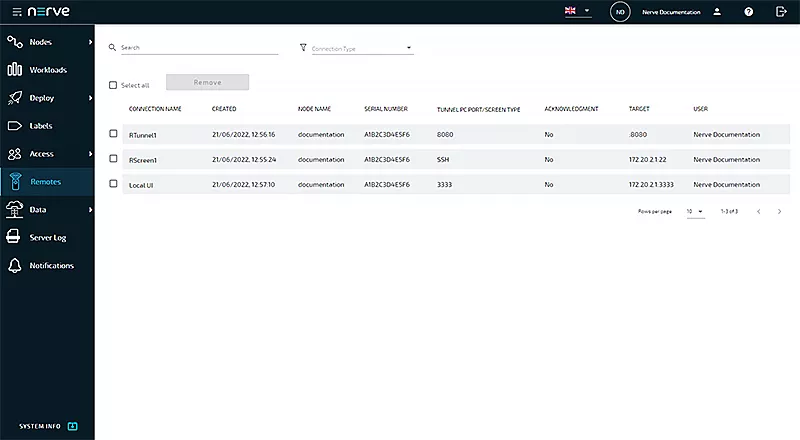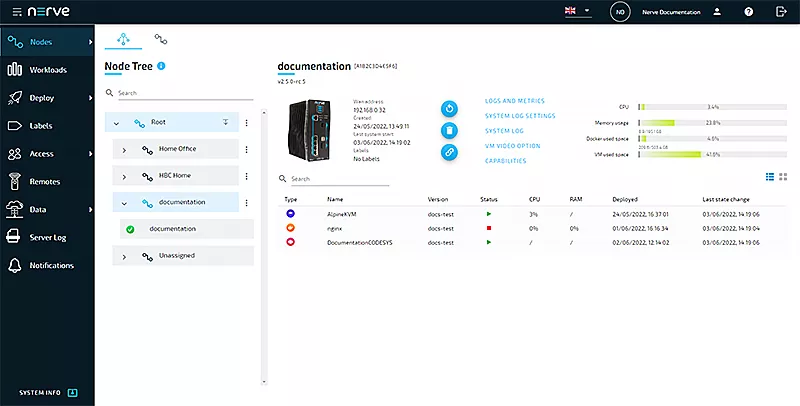Improved user experience and system usability in Nerve 2.5.0
TTTech Industrial’s modular edge computing platform Nerve supports machine builders and system integrators in their digitalization journey. Feedback from customers using Nerve in their plants and for different use cases is considered to further optimize user experience and features for the needs of today’s industrial environments.

The latest update, Nerve 2.5.0, includes updates for easier handling of workloads and remote connections in the tool, as well as improvements in security and system usability and for the user interface (UI).
We asked Marián Hönsch, our Product Manager Industrial IoT, about the highlights of the release:
What are the key benefits of the Nerve 2.5.0 update?
Our main focus was on improving the user experience (UX), user interface (UI) and system usability. We built Nerve as an open and modular system because industry and customer requirements differ, and the digitalization of machines or factories is not a task that can be accomplished overnight. With Nerve, we offer an industrial edge computing platform that serves as a secure foundation to manage software and devices in plants across the world.
A lot of development time has been invested in testing to ensure Nerve is always up to date in terms of security. This allowed us to improve the performance of existing features to the extent that we can reduce the possibility of unexpected irregularities occurring to a minimum. The system is more consistent and robust in itself and all open-source components (reference components) included in Nerve have been updated to the latest version.
Besides the new brute force login protection, are there any other security related features?
Yes, the Management System and the Local UI now have brute force login protection in place. This helps to reduce the risk of unauthorized access in a cyberattack.
Aside from the mentioned improvements, we also have other security features: All connections in Nerve are secured using TLS and we regularly perform penetration-testing on the platform. Our software processes are implemented according to the industrial norm IEC62443 and we use a Role-Based Access System in Nerve, so administrators have full control over the individual user access rights to the Management System.
What other aspects of Nerve did you improve in this 2.5.0 update?
Our second focus was on user experience and user interfaces. Nerve connects the machine infrastructure to the cloud and allows customers to access, manage, and update devices via a Management System that can be hosted in the cloud or on a local server. We want to provide our customers with high usability and easy handling, so we improved some features for configuring workloads and managing remote connections and edge nodes.
We adapted the workload version configuration and improved the configuration screens for all three workload types (Docker containers, virtual machines, CODESYS). Settings are now split into tabs, offering improved readability and usability. The content of the tabs depends on the workload type.

Remote connections can now be configured during the initial configuration of a workload. Up until now, remote connections could only be configured after the provisioning of the workload.

We have also improved the remote connection lists in the Management System and the Local UI. Extra columns with more information for each connection have been added, as well as new ways to remove remote connections from the list. Checkboxes and a remove button now make it easier to remove multiple connections at once.

Buttons, graphs, and information have been rearranged in the node details screen with the aim to increase readability and usability. In addition, a new view for deployed workloads on the node has been added. All deployed workloads can now be viewed in table view, offering more basic information about the workload. The new table view is now set as the default view for workloads. The user can switch to the tile view in the menu above the node list.

Further reading
- Check out the technical details of the release in our what’s new section of the documentation.
- Find out more about Nerve from a technical point of view in the documentation.
Discover Nerve
- Read a short introduction to Nerve’s modules
- Find out more about Nerve‘s features
- Register for a free trial of Nerve